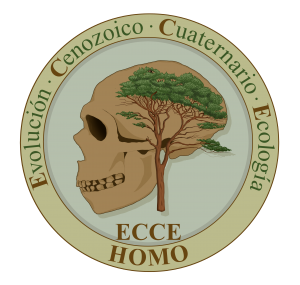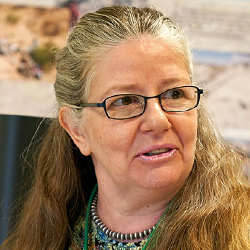MARÍA ALEJANDRA GANDOLFO
Alejandra Gandolfo is Professor at the School of Integrative Plant Science, Plant Biology Section in the University of Cornell. She is an expert in Paleobotany and Plant Anatomy and Morphology. Alejandra grew up in Buenos Aires, Argentina. She earned her undergraduate and master’s degrees from the Universidad CAECE, and her Ph.D. from the Universidad de Buenos Aires. She was hired by Cornell University in 1994. She is now the Director of Undergraduate Studies for Biodiversity and Systematics and Plant Biology. Alejandra also works for the Museo Paleontológico Egidio Feruglio in Trelew, Patagonia, Argentina. She has published more than 100 peer-reviewed research papers. In 2018, she became the first female and Latina editor-in-chief of an important paleobotany journal, Review of Palaeobotany and Palynology. She is an alumna of the Fulbright Program and a Hennig Society Fellow. Her research emphasis is on plant evolution and development, origin of angiosperms, Cretaceous and Tertiary floras and paleoclimate of North and South America. She is currently working on imaging and digitalization of the Cornell University Plant Anatomy Collection (CUPAC).
“The editors and organizers of Paleofloraiberica have done it again! Paleofloraiberica, a three-volume book, is the most comprehensive text of the Iberian Peninsula’s past floras while providing critical data on its fossil pollen, spores, charcoal, fruits and seeds, wood, and leaves covering the Cenozoic, basically the last 66 million years of Earth’s history and after the K/Pg mass extinction event. Carrión (coordinator) in collaboration with Barrón, Postigo, Casas, Munuera, Ochando and Amorós coordinated the works of a fantastic group of palynologists and paleobotanists to produce this impressive compendium. Volume 1 covers the Paleocene to the Pliocene, while Volume 2 covers the Pleistocene and Volume 3 the Holocene. Each chapter is a testament to the meticulousness of the research. They present a wealth of information, including paleobotanical and palynological data (when available) and environmental, geographic, and geological records. The figures, carefully crafted, are not only aesthetically pleasing but also highly informative. Following the chapters, the reader is not just a passive observer but can easily immerse themselves in every described paleoecosystem surrounded by each particular vegetation. This book allows the reader to participate in observing the vegetational changes over time, making the reading experience more engaging and interactive. The importance of this work extends beyond those interested in the fossil record. It is a crucial tool in understanding the possible shifts in vegetation that are fast approaching due to climate change, emphasizing the urgency and importance of the research. Paleofloraiberica is a “must” have in every researcher’s library because of its content and because it reminds us that basic science (fieldwork, collections, descriptions) not based on molecular data is still critical and essential for understanding evolution. Reading this book was a terrific experience; my applauses and most sincere thanks to the editors and authors for providing such an inspiring book to our community!”

Grupo de investigación E005-II ECCE
HOMO (Evolución Cenozoico Cuaternario Ecología Homo)
© Paleofloraiberica








